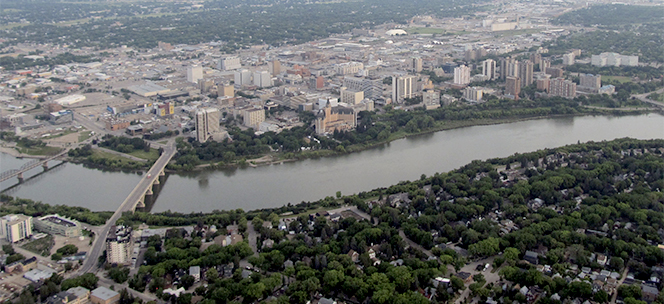

Cost of new Saskatoon arena district could fall on taxpayers
City council needs to take off the rose-coloured glasses and come clean about the potential cost to taxpayers of the proposed downtown arena and entertainment district.
Council claims the arena will be built with minimal reliance on property tax revenues.
If that’s a deal that sounds too good to be true, that’s because it is.
Council was recently presented with a report that lays out several different “revenue instruments,” those are new taxes for everyone who doesn’t speak bureaucrat, that could be used to pay for the arena instead of hiking property taxes.
These include a hotel tax, a ticket tax and tax increment financing.
A hotel tax would add a mandatory fee to hotels and other short-term accommodations in the city, making all hotel rooms more expensive. A ticket tax is a surcharge that could be added to the cost of every ticket purchased. This would make it more expensive to go to any show or sports game at the new arena.
The city wants to encourage more people to visit Saskatoon – by making them pay more for event tickets and hotel rooms.
But these two taxes only move the burden off the taxpayer if they bring in enough new taxes to cover the costs of the project. That’s a big if, and the consultant report confirms that.
“Facility fees rely on a sustained attendance rate, and to the extent that the attendance does not meet expectations, the City of Saskatoon may be required to cover shortfalls,” says the consultant’s report.
The city can’t be betting its financial future on the Blades making the playoffs every year.
However, tax increment financing likely has the biggest potential cost to local taxpayers.
Tax increment financing is a fancy way to say bureaucratic gambling. Governments bill it as a way to pay for projects without requiring any money from the pockets of current taxpayers. It’s a subsidy given to an area for development. Once that project is done, new tax revenue is supposed to be diverted to paying back that subsidy, with little or no net costs. Or at least that’s the idea.
Proponents of the arena say that it will spur economic growth in the city, so it will have no problem paying back the subsidy – the facts say otherwise.
Economists have been looking at what happens when governments use taxpayer money to build stadiums for years. Their studies have consistently found that there is no evidence of positive economic impacts, whether it’s creating jobs, growing the economy, or bringing in new tax revenues associated with subsidizing arenas.
And you don’t have to look very far to find an example of this going wrong for taxpayers. A similar strategy was used to finance to the Blue Bomber’s new stadium in Winnipeg. A TIF zone was set up at the old stadium’s site in suburban Winnipeg. New development was supposed to generate enough revenue to pay back the loans used to construct the new stadium. However, when the revenue failed to materialize, the provincial government ended up having to write off $200 million in loans on the backs of taxpayers.
In 2018, Saskatoon’s estimate for the project was up to $266 million to build a new arena and convention center. The new report estimates a cost of more than $500 million.
In Calgary, the initial cost estimate for its new arena was $550 million in 2019. By the time the deal was inked this year, the cost had more than doubled to $1.2 billion.
Saskatoon is already in the midst of a budget crisis that may result in city hall raising taxes by decade high levels. Taxpayers can ill-afford another expensive boondoggle contributing to the city’s spending problem.
Mayor Charlie Clark and the rest of city council need to be clear with taxpayers that if the gamble doesn’t go exactly according to plan, they will be picking up the bill. And it won’t be a small one.


.jpg)

.jpg)
